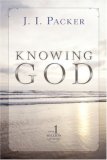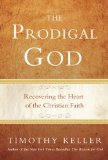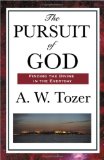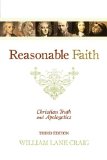Special thanks to Connie at Crossway for a review copy of this book.
For all the time I’ve spent studying Scripture, I hate to admit that I have a fairly weak theology of Scripture itself. The truth is that I’m probably not alone. It had been a long time since I had read something about the nature of Scripture, particularly of a more technical bent. Enter D A Carson (I know, I’ve read a lot of Carson this year- I have many years of catching up to do).
 Collected Writings on Scripture by D A Carson is just that, collected writings on Scripture written by D A Carson. Included are 10 articles; the first 5 covering a variety of topics related to the Bible and the study of it (originally published between 1983 and 1997), the last 5 being a collection of book reviews of 9 books released from 1981 to 2007. It may seem odd to some that one would include a series of book reviews in a collection of writings, but they reveal as much about Carson’s understanding of Scripture.
Collected Writings on Scripture by D A Carson is just that, collected writings on Scripture written by D A Carson. Included are 10 articles; the first 5 covering a variety of topics related to the Bible and the study of it (originally published between 1983 and 1997), the last 5 being a collection of book reviews of 9 books released from 1981 to 2007. It may seem odd to some that one would include a series of book reviews in a collection of writings, but they reveal as much about Carson’s understanding of Scripture.
The first chapter, “Approaching the Bible,” is probably the only one that could be read with relative ease by a layperson (despite Carson’s claim to the contrary in his preface). It was originally written as the opening essay for the New Bible Commentary: 21st Century Edition, released in 1994. This essay would be the most broadly useful, one that could be passed around to church members wishing to understand better the nature of the Bible and how it is best interpreted (note: it can be downloaded as a pdf here, although it looks a bit awkward).
The next four chapters are a bit of a tougher read, though still quite rewarding. I’ll admit that I found my eyes crossing a bit during chapter 2 (“Recent Developments in the Doctrine of Scripture”)- though don’t ignore the warning to evangelicals at the end of the chapter-, but was reinvigorated during chapter 3, “Unity and Diversity in the New Testament: The Possibility of Systematic Theology.” The latter chapter is a must read for those of us who find ourselves suspicious of systematic theology (myself included). Pastors could easily take the insights from this chapter and make them more digestible to their congregations.
I found chapter 4, “Redaction Criticism: On the Legitmacy and Illegitimacy of a Literary Tool,” to be my favorite, surprisingly so. “Surprisingly” because chapters on methodology, specifically a method I’ve found to be used with far too much confidence by some scholars, are rarely the most exciting. Yet after giving 20 reasons to be cautious of redaction criticism, Carson still argues that it has its place in Gospel study. (Side note: the extended Morna Hooker quote on page 160 is worth multiple readings.)
In the fifth chapter, entitled “Is the Doctrine of Claritas Scripturae Still Relevant Today?,” Carson jumps into the worlds of historical theology and epistemology in admirable fashion. For those familiar with his works on postmodernity, such as The Gagging of God, this chapter will cover familiar territory.
The book reviews deal with a handful of books I’ve never heard of, and a few more well known authors (Marshall, Enns and Wright). After offering a summary of their contents, he interacts (often critiquing) their contents in rather entertaining fashion. For the most part his reviews would be seen as “negative,” meaning he has serious concerns with the books reviewed. The notable except is Jeffrey Sheler’s Is the Bible True?. His disagreements doesn’t lead him beyond the bounds of appreciation, however.
One of my concerns about this book is in these book reviews. It’s not that I find them unworthy of their inclusion in this collection of essays; on the contrary I find them to be brilliant. Carson writes with candor and wit, deconstructing false premises, refuting historical revisionist tendencies and kicking over sand castles built on bad logic. Considering the vast majority of book reviews I read in the world of biblical scholarship are formulaic and predictable, I appreciate Carson’s willingness to forego convention and get to the heart of the matter.
My concern lies not with Carson’s reviews themselves, but that readers from my generation (roughly 40 and below) may skip over the more dense chapters on methodology and the nature of Scripture to grab a ringside seat for the fight. My generation is one that loves to pump our fist in the air, rallying behind our champion as he goes toe-to-toe with the “bad guys.” My concern is that the scholars, both actual and wannabe (my choice of the latter term over “aspiring” is intentional), of my age group are more adept at poking holes than patching them. We have been taught to think critically, engage thoughtfully, examine assumptions, etc. And I’ve seen firsthand many who were quite skilled at doing just that. Unfortunately, many of those in my generation are cowards. They can point out the flaws of others, but won’t stick their neck out long enough for anyone to return the favor.
But Carson is not like my generation. To be sure, the first portion of the book devotes plenty of space to critiques. But the function is not merely negative (why so-and-so is wrong). Carson offers positive arguments for how to approach Scripture. In other words, he isn’t simply arguing against something, he’s arguing for something. Building a strong case often requires both, though I fear many can only do the former. Thankfully, Carson provides a model for making a case, not just deconstructing one.
I do recommend this book, particularly for students and pastors who need some assistance thinking through their understanding of Scripture, both its nature and the study of it. The first chapter and the review of Sheler’s book would probably be the only sections easily read by a layperson, though with time and a knowledge of theological terms one would benefit greatly from it. In all, D A Carson’s Collected Writings on Scripture is worth the time and effort.
Read Full Post »












Ciampa & Rosner on 1 Corinthians for 50% Off
Posted in links, tagged 1 Corinthians, Brian Rosner, commentaries, Roy Ciampa on Monday, November 15, 2010| 1 Comment »
Westminster Bookstore is having a short (1 week) sale on Roy Ciampa and Brian Rosner’s 1 Corinthians commentary in the Pillar series. Ciampa, as some of you know, was one of my NT profs at Gordon-Conwell, and I’m sure this commentary is very good (along with the 12 million other very good commentary on 1 Corinthians). I first read this at Nick’s blog, so click the link to his blog, then from there click the link to Westminster Bookstore. If you purchase it after clicking on Nick’s link, he’ll get a kickback or something. Help a brother out.
Read Full Post »